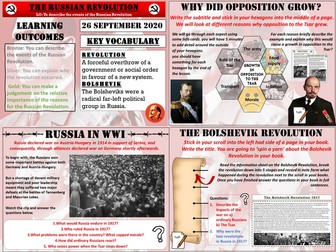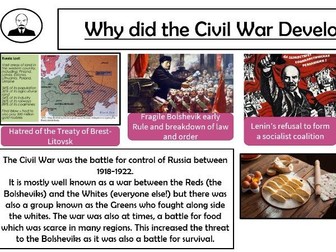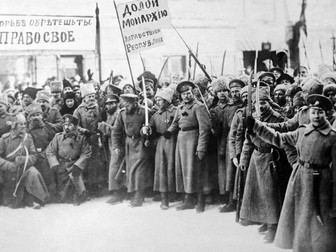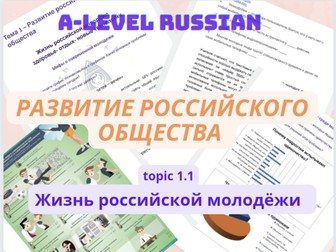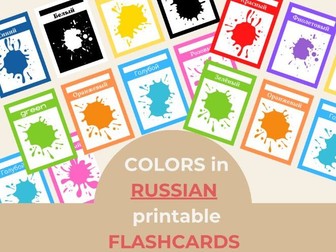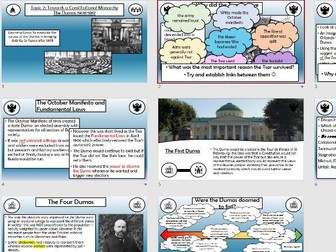13. Russian Civil War – War Communism
This is one lesson from a completely fully resourced and integrated series of 17 lessons on the Russian Revolution. It was designed for GCSE History but has also been used very effectively at KS3 level.
Each lesson contains as a minimum:
• Recap from previous lesson
• Keyword flashcards (in a unique ‘Pokémon card style’ template!)
• Writing skill challenges building up to fully developed PEEKA paragraphs (these increase in complexity as you move through the lessons)
• Text with comprehension questions
• A ‘reverse engineer’ essay question task.
• A model paragraph with a ‘how can you improve?’ task
• Stretch questions.
• Video links.
The 17 lessons are as follows:
Russia and its discontents (free)
1905 Revolution (free)
The First World War (free)
Rasputin
February Revolution
Mid-Module Revision Tasks and Knowledge Check
Provisional Government
October Revolution
Bolsheviks & Constituent Assembly
Treaty of Brest-Litovsk
Russian Civil War
Russian Civil War – Why did the Reds win?
Russian Civil War – War Communism
Russian Civil War – Kronstadt Naval Mutiny
Russian Civil War – New Economic Policy
Russian Civil War – Lenin’s Legacy
End of unit – all revision cards, revision tasks, assessment questions, models and criteria.
Hope they help.
Wolsey Academy, a non-profit resource provider, directs all profits to various charities, including refugee support, youth sports, educational programs, and carbon capture, achieving a carbon-negative status. Explore our site for resources and free history role-playing games loved by students. Thank you for your dedication to teaching and for supporting our mission.
#BetterTeachingBetterPlanet
